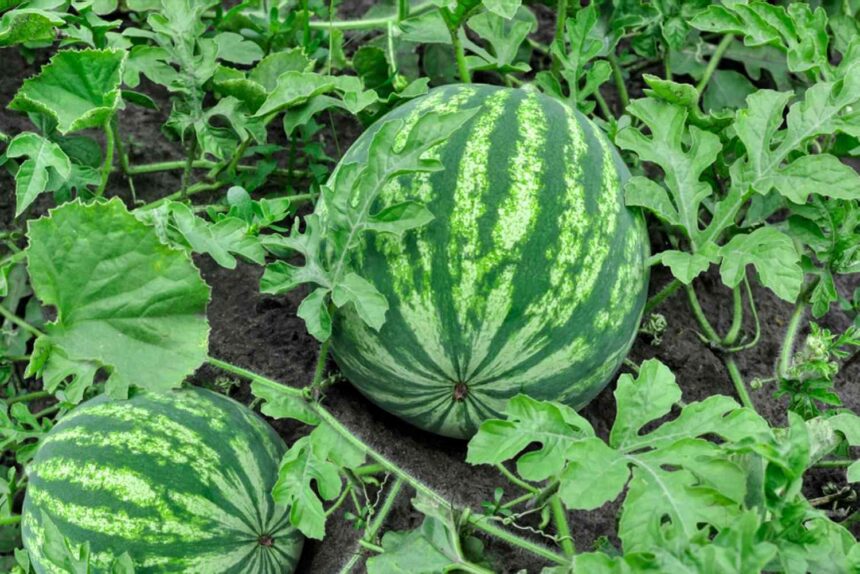Watermelons are a summer staple, loved for their juicy sweetness and refreshing taste. However, achieving a successful crop requires adequate pollination, which is crucial for fruit development. If your watermelon plants are under-pollinated, you might face issues like small fruit, poor taste, or reduced yields. Here are ten early signs that your watermelon crop may not be getting enough pollination.
1. Poor Fruit Set
One of the first signs of under-pollination is a low fruit set. If you notice that many flowers are blooming but few fruits are developing, this could indicate that pollination is inadequate. Healthy watermelon plants typically set multiple fruits when pollination occurs effectively.
2. Misshapen Fruit
Watermelons that are under-pollinated may develop misshapen or uneven fruits. This happens because the lack of pollination leads to uneven growth in the fruit, resulting in odd shapes and sizes. If you see a large number of deformed fruits, it may signal that pollination has not been successful.
3. Small Fruit Size
If your watermelons are smaller than usual, it could be a result of insufficient pollination. When flowers are not fully pollinated, the fruit often does not reach its potential size. Check the size of your melons in comparison to typical growth patterns for your variety.
4. Blossom Drop
Blossom drop occurs when flowers fall off the plant without setting fruit. This is often a response to stress, including inadequate pollination. If you observe many flowers wilting and dropping off without producing fruit, it’s a sign that your plants may not be receiving enough pollination.
5. Delayed Ripening
Under-pollination can cause delayed ripening in watermelons. If your melons are taking longer than expected to mature, it may indicate that they were not fully pollinated. Keep an eye on the timeline from flowering to harvesting; significant delays could point to pollination issues.
6. Low Seed Development
Healthy watermelon fruits typically contain a number of seeds, as these are a byproduct of successful pollination. If you find that your fruits have very few or no seeds, it is a strong indicator of poor pollination. This can result in less flavor and a subpar eating experience.
7. Fruit with Poor Flavor
Watermelons that have not been adequately pollinated may taste bland or have an off flavor. Since pollination influences the development of sugars and flavor compounds, insufficient pollination can lead to disappointing taste. If your melons lack sweetness, check for pollination problems.
8. Flowering Imbalance
An imbalance between male and female flowers can indicate pollination issues. Watermelon plants produce both types of flowers, but if there are too many male flowers relative to female ones, it may lead to inadequate pollination. Look for clusters of male flowers that outnumber female flowers on your plants.
9. Pest Presence
Certain pests, such as bees and other pollinators, are essential for effective watermelon pollination. If you notice a significant lack of pollinators in your garden, this could contribute to under-pollination. Take note of the presence of beneficial insects, and consider planting flowers nearby to attract them.
10. Environmental Stress
Extreme weather conditions, such as high temperatures or drought, can hinder pollination by affecting pollinator activity. If your watermelons are exposed to environmental stressors, you might see the symptoms of under-pollination. Ensure your plants are well-watered and protected from harsh conditions to help improve pollination rates.
Monitoring these signs early in the growing season can help you address under-pollination issues before they significantly impact your watermelon harvest. To enhance pollination, consider introducing more pollinator-friendly plants, reducing the use of pesticides that harm beneficial insects, and ensuring that your plants are healthy and stress-free. By taking proactive steps, you can help ensure a bountiful and delicious watermelon crop.
Join 'Farmers Mag' WhatsApp Channel
Get the latest Farming news and tips delivered straight to your WhatsApp
CLICK HERE TO JOIN






